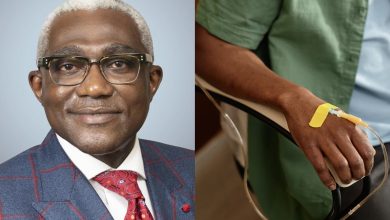Serena Williams Has Grapefruit-Sized Cyst Removed: “It Kept Growing” – BlackDoctor.org


Serena Williams has been living her best life since her retirement. The 23-time Grand Slam champion has been showcasing her life on social media going to award shows, being a mommy of two, running her multiple businesses, and showing off her newfound style inspiration that’s getting rave reviews and everyone seems to enjoy. But she recently shared something with fans that made them not only concerned but more informed about their own health.
The 43-year-old just revealed that she’s recovering after having a cyst removed from her neck. She said she first noticed something was off in May, but only recently had it removed. Here’s what she shared about her experience, and how she’s doing now.
What was Serena Williams’ medical condition?
Serena was diagnosed with a branchial cyst. “Back in May, I found a lump showing on my neck,” she shared in the caption of an October 15 TikTok that showed her in a hospital bed. “I immediately went to the doc, got a MRI, and was told I have a brachial cyst.”
Serena said she was told she didn’t need to have it removed, so she didn’t. “But it kept growing,” she added.
Three tests and a biopsy later, and Serena was told she should consider having it removed immediately, “because it was the size of a small grapefruit.”
“It could get infected or, worse, leak,” she shared. “So this is me removing it.”
What Is a Branchial Cyst and How Is It Different than Other Throat Diseases?
Branchial cysts are small fluid-filled sacs that may look like lumps under your skin on the side of your neck. These cysts are congenital, meaning they’re present at birth. Branchial cleft cysts appear at any age but are often found in children. They’re benign (noncancerous), but healthcare providers may recommend surgery to remove the cyst.
Branchial cysts and lymph nodes differ in a number of ways, including size, appearance, and what they indicate:
Size
Branchial cysts can range in size from 1 to 10 cm, while lymph nodes are typically under 1.5 cm in size.
Appearance
Branchial cleft cysts are usually round and well-defined, while lymphangiomas can be infiltrative.
What they indicate
Swollen lymph nodes are usually a sign of infection, such as a cold or glandular fever, while a cyst is a harmless fluid-filled lump that may go away on its own.

While they can be similar in look from the outside, thyroid disease symptoms are a little different. A swollen neck from an enlarged thyroid gland, or goiter, can cause a variety of symptoms, including:
Swelling: The swelling can be smooth or irregular, large or small, tender or painless, and symmetrical or larger on one side.
Discomfort: The swelling can cause discomfort, particularly when it’s large.
Pressure-related symptoms: The swelling can put pressure on the windpipe and esophagus, causing difficulty swallowing, breathing difficulties, coughing, or wheezing.
Voice changes: The swelling can cause hoarseness or voice changes.
Other symptoms: The swelling can also cause a choking sensation, noisy breathing, snoring, neck veins that bulge, or dizziness.
Symptoms You Should Look for
Symptoms of a branchial cyst include:
- A small pit, lump, or skin tag on the neck or upper shoulder
- Bumps that grow bigger over time or become more painful when swallowing
- Swelling or tenderness in the neck, sometimes after an upper respiratory infection
- Fluid draining from a small dimple or opening in the skin
- Noisy breathing if the cyst is large enough to block part of the airway
What Causes These Cysts?
Branchial cysts happen during gestation, as your body is building the foundation for your head and neck structure, including your larynx (voice box), your mandible (upper jaw) and your hyoid bone, which supports your tongue.
Here’s how that process works:
Neural crest cells, which develop tissues, gather in the area of your head and neck to create what’s called your branchial apparatus.
Your branchial apparatus becomes cartilage, bone, blood vessels and the muscles in your head and neck.
Your branchial apparatus has ridges of tissue (arches) and in-foldings of tissue (clefts) that are responsible for developing certain parts of your head and neck. All told, there are six arches and five clefts.
Branchial cleft cysts happen when branchial arches don’t fuse, or grow together. Think of these arches as hamburger patties on a plate. Your body needs to compress these patties to make one larger patty. When spaces are left between the patties, branchial anomalies, including branchial cleft cysts, fistula and sinuses, develop.

How Is Serena Doing Now?
“I am feeling so grateful, and fortunate everything worked out, and most of all I’m healthy,” she wrote. “I still made it to American doll with Olympia as promised. And yes, all is okay.”
As far as retirement goes, many have questioned if the superstar tennis play come out of retirement and return to the court.
Serena recently issued a glimpse of hope for fans telling Vanity Fair in July 2024 that a comeback is “always going to be in the back, back, back, back, back, back, back of my mind.”
“I stay fit. I stay healthy,” Serena added. “When I’m watching, it’s like, Okay, well, you could be out there, too.”




